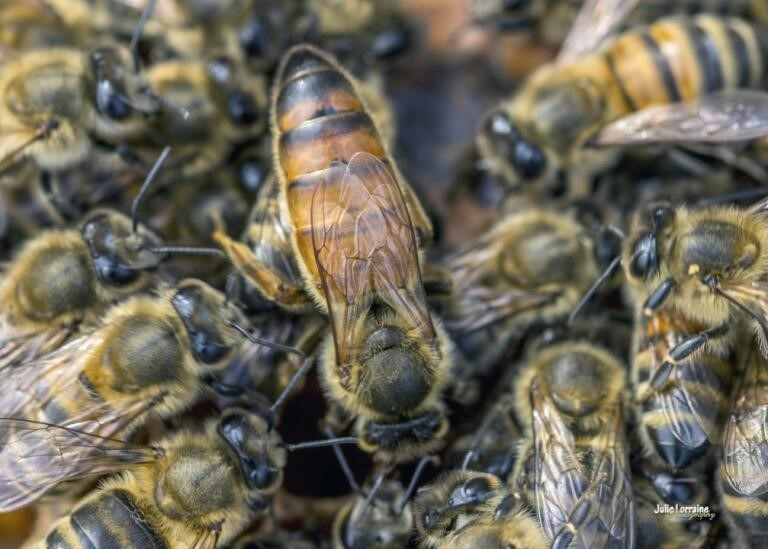pan-european assessment, monitoring, and mitigation of stressors on the health of bees
Behavioral & reproductive performance in honeybees as potential pesticide exposure risk assessment endpoints
A recently published research article investigates behavioral and reproductive endpoints for pesticide exposure risk assessment. The paper called "Pesticide risk assessment in honeybees: Toward the use of behavioral and reproductive performances as assessment endpoints" reviews the biological interests and ecotoxicology measurements of these endpoints with a focus on pesticide exposure effects on honeybees (Apis mellifera).

Honeybees.
The article investigates into the existing knowledge of behavioral patterns and reproductive characteristics in honeybees, and identifies such performances that could be used as risk assessment endpoints for sublethal effects of pesticide exposure to honeybees. The authors of the article, amongst whom PoshBee researchers, demonstrated insights into the reliability and relevance of different behavioral and reproductive endpoints, including waggle dance, grooming, learning, foraging, queen and drone fertility, homing flight, and locomotion.
The article concludes that new pesticide risk assessment endpoints need to be implemented at the screening level to consider the risk posed by sublethal doses and concentrations in honeybees, with homing and reproductive performances having been such endpoints with great potential.
Read the full article here.